On an elevated position off the shore of Loch Ness is Urquhart, a medieval castle that has been the site of plenty of history. Ness is a skinny lake placed diagonally on a map running roughly 23 miles from northeast to southwest in the Scottish Highlands.
[huge_it_maps id=”5″]
Urquhart rests in the middle on the western shore, giving it control of any shipping movement across the lake.
[huge_it_maps id=”6″]
The Scottish Wars of Independence ensured that whatever stronghold rested on this spot saw war. In 1296, the English captured the castle along with others during the invasion led by King Edward I (r. 1272-1307). ((Michael Prestwich, Edward I (New Haven: Yale University Press, 1997), 473.)) In 1297, Andrew Murray (d. 1297) initiated a rebellion in the northern Highlands around the same time that William Wallace (1272-1305) started one in the south. Murray captured Urquhart that year. Edward brought the castle back into English control in 1303 during a lengthy campaign in Scotland. ((Fiona Watson, Under the Hammer: Edward I and Scotland, 1286-1307 (East Linton: Tuckwell Press, 1998), 180.)) In 1308, Scottish King Robert the Bruce (r. 1306-1329) captured and razed the castle. ((G. W. S. Barrow, Robert Bruce and the Community of the Realm of Scotland, 4th ed. (Edinburgh: Edinburgh University Press, 2005), 226.))
While this is only a taste of the history of this site, most of the existing structures come from 1509. ((Alan Young and Michael J. Stead, In the Footsteps of Robert Bruce in Scotland, Northern England, and Ireland (Stoud: The History Press, 2010), 48.)) Modern additions include a massive visitor center along with a fixed-counterweight trebuchet. This trebuchet is a modern recreation, as no originals survived the Medieval Period.
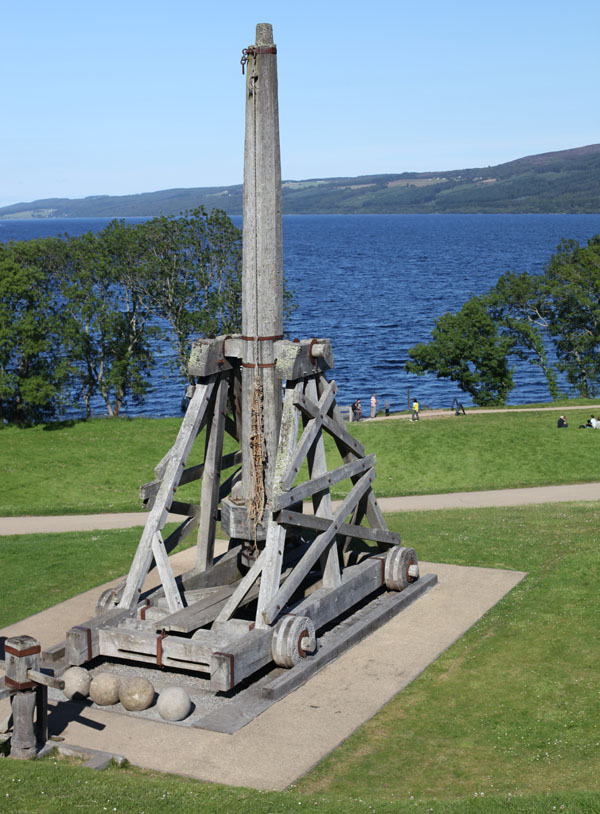
While nearby a historical marker provides some information about trebuchets, it provides no details on the work performed by the Timber Farmers Guild who constructed this beauty in 1998. In addition to a NOVA special (also available on YouTube), they told their lengthy, dramatic tale in the 50th issue of Timber Framing.
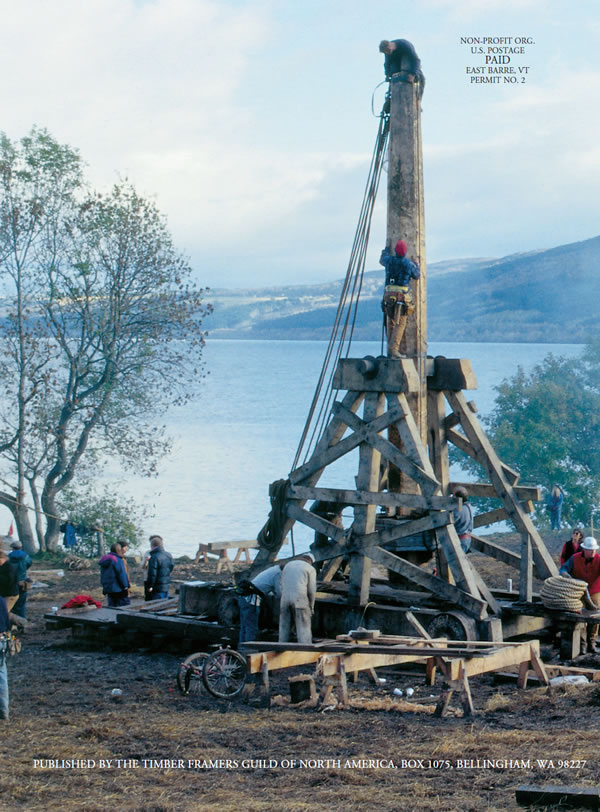
All but the arm was made from oak. Made from a Douglas-fir log, the 26-ft arm has an 8-ton counterweight of lead. That enables it to hurl these 18-inch diameter, 250-pound stones, which I could not lift by myself. As for distance, it can easily clear 200 yards at 127 mph. ((Ed Levin, “The Highland Fling,” Timber Framing: Journal of the Timber Framers Guild 50 (1998): 14-19.))
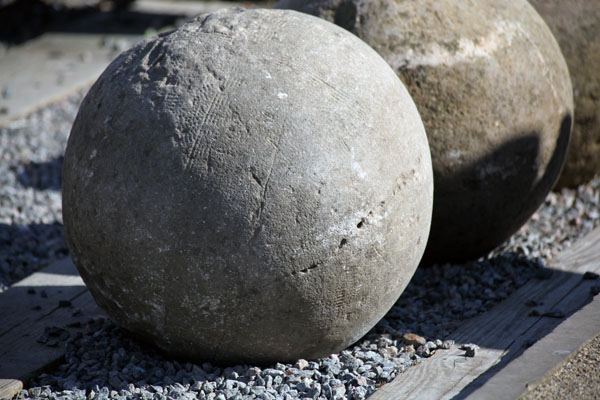
I attempted to swing the giant beam, but I could not get it to budge much. It would require a group of men pulling the attached rope to move it into place.

As for the construction, the work involved dozens of members from the Timber Framers Guild. They adopted the design from a thirteenth-century manuscript. Neither the Timber Framing journal nor the NOVA special mentions the medieval manuscript by name, but the NOVA special briefly shows an image from the manuscript.

Luckily, I collect medieval trebuchet images like comic books. The Timber Framers adopted the design from a copy of the Cantigas de Santa Maria (c. 1280), which contains an illustration of the Muslim siege of Constantinople. ((Details of the manuscript images available in Paul E. Chevedden, “Artillery of James I the Conqueror,” in Iberia and the Mediterranean World of the Middle Ages, vol. 2, eds. Paul E. Chevedden, Donald J. Kagay, and Paul G. Padilla (Leiden: Brill, 1996), fig. 12.))
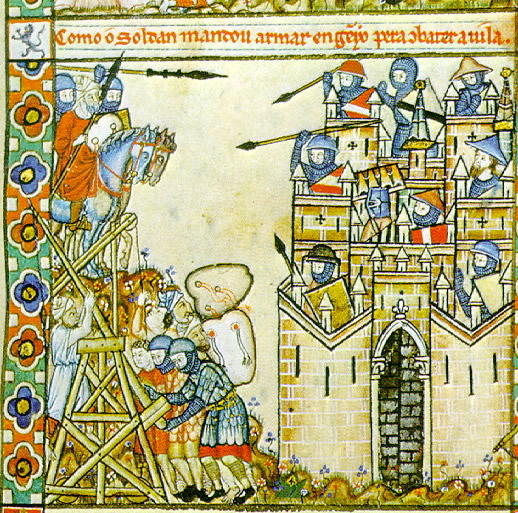
This is a hybrid-counterweight trebuchet, which uses both gravity power from a weight along with a pulling-crew.
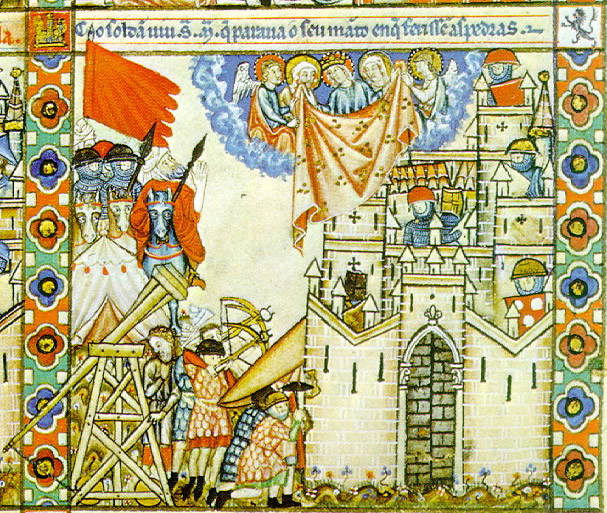
The final result was a fixed-counterweight trebuchet, which activates solely by the gravity force from the falling pivoting mass on one end.
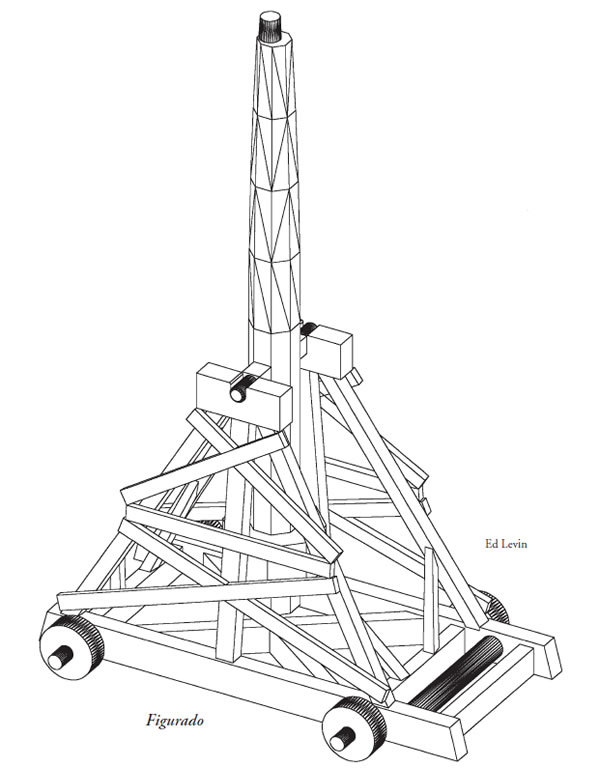
The 30-inch wheels were tricked out with lithesome carved Celtic sidewalls. They found that the wheels on a fixed-counterweight trebuchet kept it stable and lengthened the trajectory.
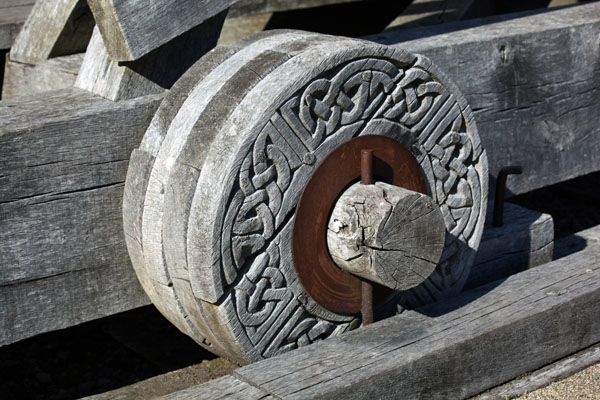
After several trial-and-error attempts, they were able to hit a makeshift stonewall several football fields away.
Sadly, this trebuchet has not seen any action since 1998. Still, the work by the Timber Framers Guild stands at Urquhart Castle and it is well worth the trip. You can even spot it in a Google Map if you look hard enough.
[huge_it_maps id=”7″]
